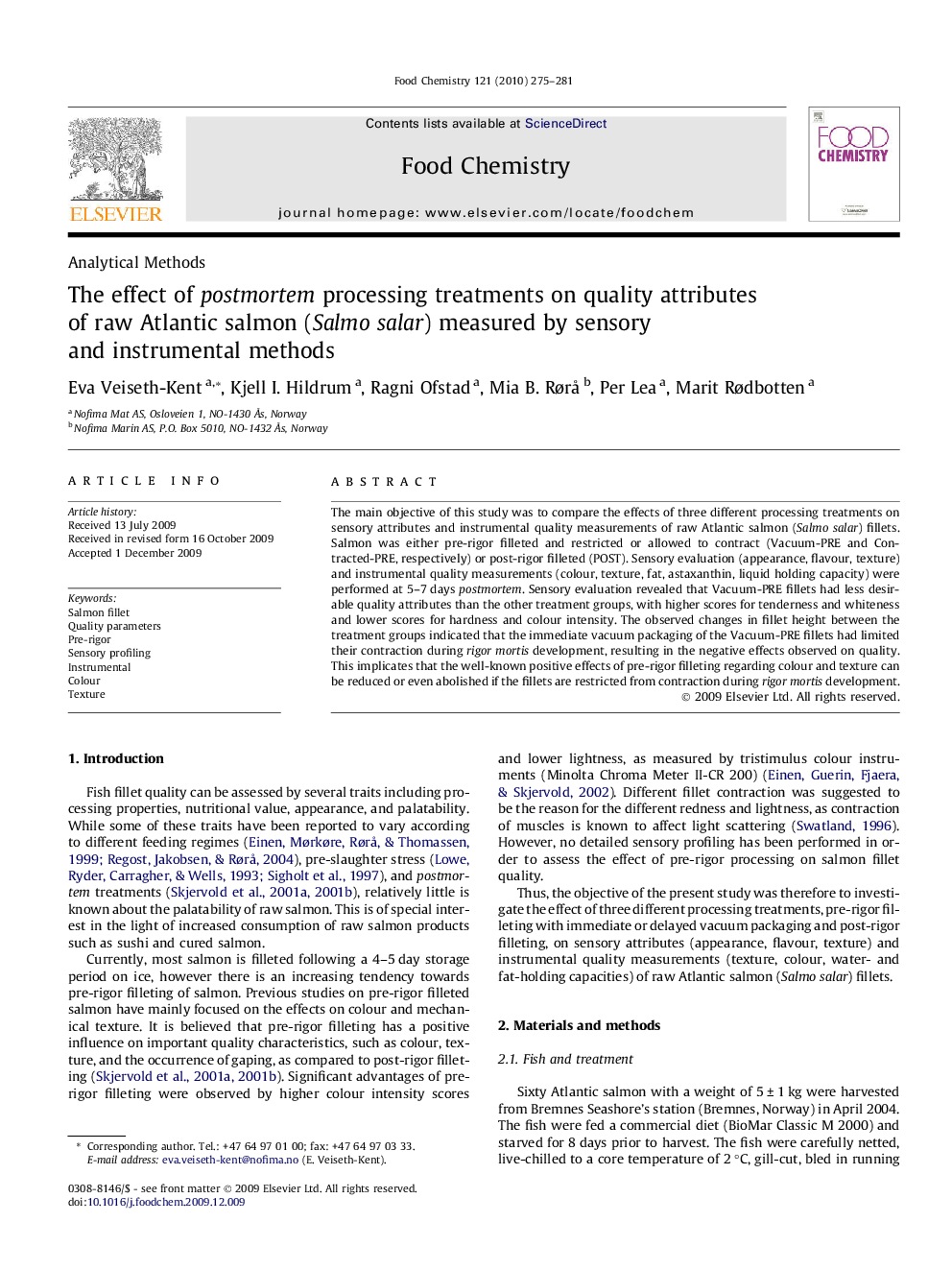| Article ID | Journal | Published Year | Pages | File Type |
|---|---|---|---|---|
| 1185323 | Food Chemistry | 2010 | 7 Pages |
The main objective of this study was to compare the effects of three different processing treatments on sensory attributes and instrumental quality measurements of raw Atlantic salmon (Salmo salar) fillets. Salmon was either pre-rigor filleted and restricted or allowed to contract (Vacuum-PRE and Contracted-PRE, respectively) or post-rigor filleted (POST). Sensory evaluation (appearance, flavour, texture) and instrumental quality measurements (colour, texture, fat, astaxanthin, liquid holding capacity) were performed at 5–7 days postmortem. Sensory evaluation revealed that Vacuum-PRE fillets had less desirable quality attributes than the other treatment groups, with higher scores for tenderness and whiteness and lower scores for hardness and colour intensity. The observed changes in fillet height between the treatment groups indicated that the immediate vacuum packaging of the Vacuum-PRE fillets had limited their contraction during rigor mortis development, resulting in the negative effects observed on quality. This implicates that the well-known positive effects of pre-rigor filleting regarding colour and texture can be reduced or even abolished if the fillets are restricted from contraction during rigor mortis development.
